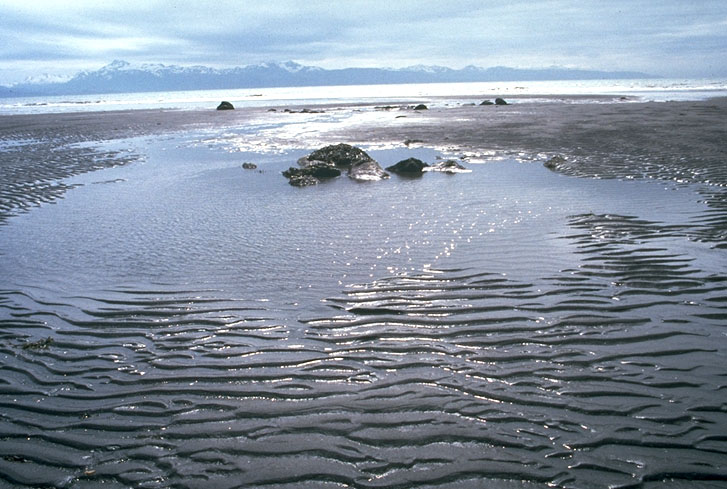

Mudflats may be viewed geologically as exposed layers of bay mud, resulting from deposition of estuarine silts, clays and aquatic animal detritus. They are found in sheltered areas such as bays, bayous, lagoons, and estuaries they are also seen in freshwater lakes and salty lakes (or inland seas) alike, wherein many rivers and creeks end. A global analysis published in 2019 suggested that tidal flat ecosystems are as extensive globally as mangroves, covering at least 127,921 km 2 (49,391 sq mi) of the Earth's surface. Mudflats or mud flats, also known as tidal flats or, in Ireland, slob or slobs, are coastal wetlands that form in intertidal areas where sediments have been deposited by tides or rivers. In this case, the tidal flat is protected seaward by a beach barrier, but in many cases (low-energy waves and longshore currents) the tidal flats may directly pass into a shallow marine environment. The most apparent character of the area is the development of tidal channels, affecting mainly the intertidal zone. 95, 641–649.General sketch-map of a tidal plain, showing the typical tripartition in supratidal, intertidal and subtidal zones. Comparative study of the structure of some tropical and temperate marine soft-bottom macrobenthic communities. A survey of the meiofauna of an eastern tropical Pacific intertidal mudflat. Community structure of macrobenthos and the results of macropredator exclusion on an intertidal mudflat. The benthic community of an intertidal mudflat in the Gulf of Nicoya, Costa Rica. Marine benthic diversity: a comparative study. In: Estuaries and coasts: spatial and temporal intercomparisons. Macrofauna in mud and sand of tropical and temperate tidal flats. Biological studies of Callianassa australiensis (Dana). Impact of foraging soldiercrabs (Decapoda, Mictyridae) on meiofauna in a tropical tidal flat. Plathelminthes in tropical intertidal sediments of northeastern Australia. Mussel beds - amensalism or amelioration for intertidal fauna? - Helgoländer Meeresunters. The ecology of tropical soft-bottom benthic ecosystems. Microbial-meiofaunal interrelationships in some tropical intertidal sediments. Intertidal zonation and seasonality of meiobenthos in tropical mangrove estuaries. Tropical tidal flats are compared with their temperate counterparts and approaches for future research in tropical benthos communities are recommended.Īlongi, D. Deposit feeders, dominated the assemblages both in terms of individuals as well as species numbers. Over 50% of the species encountered were represented by less than three individuals. Species densities were comparable at both sites and rather low (6 species 177 cm −2, 2–7 species 10 cm −2 and 5 meiobenthic Plathelminth species 5 cm −2). 29 species and H′=1.78 in the Haughton estuary). The two study sites were similar in their abundance structures, but species due to a higher diversity of polychaeta in the Channel (120 species, H′=3.80 vs. Total abundances for macrofauna averaged 31 individuals 200 cm −2, mesofauna (defined as infauna smaller than 0.5 mm and retained on a 0.25 mm sieve) averaged 16 individuals 10 cm −2 and meiofauna averaged 231 individuals 5 cm −2. A zonation of benthic communities is described. General features of benthos communities of tropical tidal flats are defined from northeast Australia, based on surveys from 1988 to 1991 in Hinchinbrook Channel and in the Haughton River estuary.


 0 kommentar(er)
0 kommentar(er)
